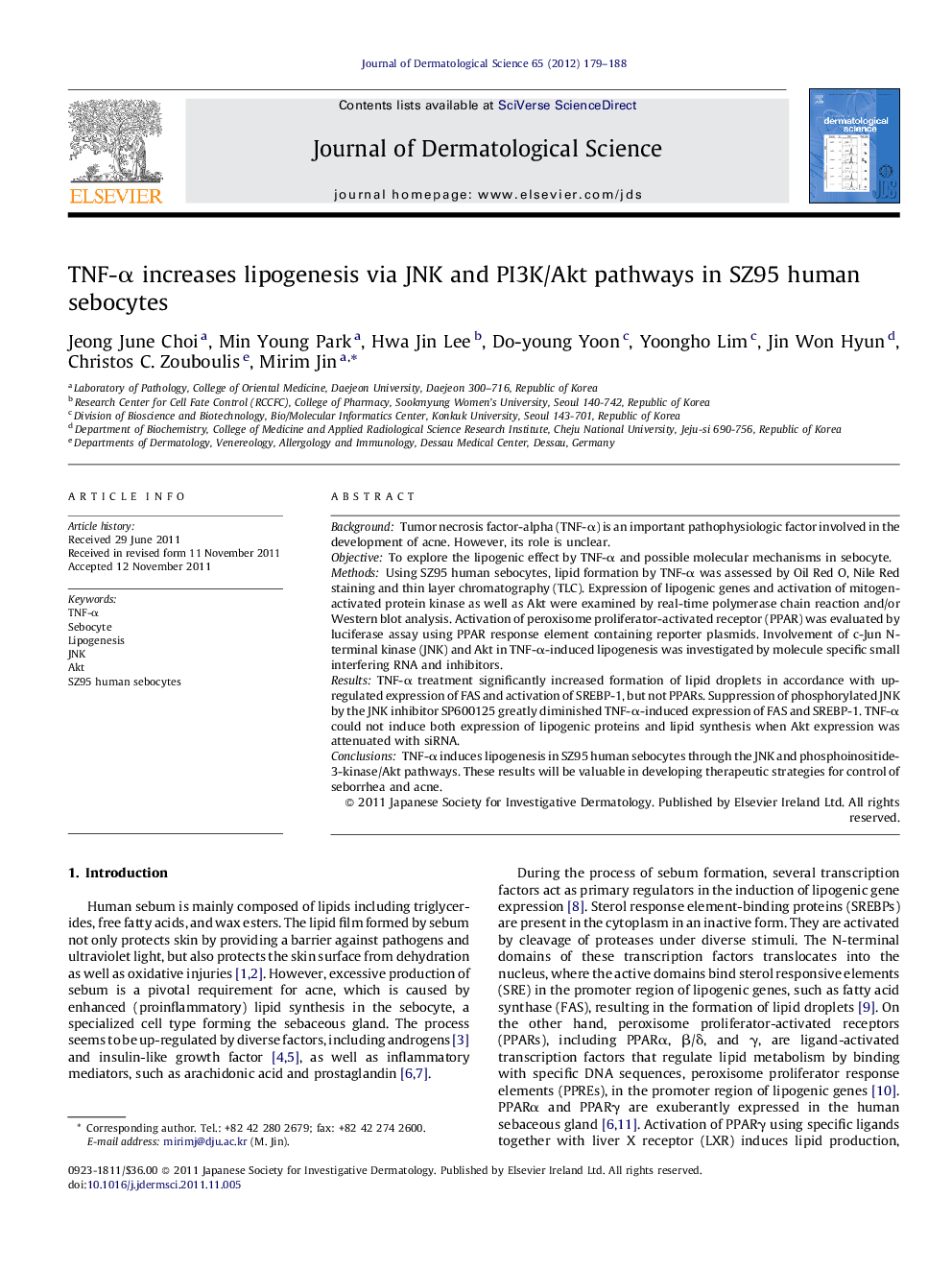| Article ID | Journal | Published Year | Pages | File Type |
|---|---|---|---|---|
| 3213510 | Journal of Dermatological Science | 2012 | 10 Pages |
BackgroundTumor necrosis factor-alpha (TNF-α) is an important pathophysiologic factor involved in the development of acne. However, its role is unclear.ObjectiveTo explore the lipogenic effect by TNF-α and possible molecular mechanisms in sebocyte.MethodsUsing SZ95 human sebocytes, lipid formation by TNF-α was assessed by Oil Red O, Nile Red staining and thin layer chromatography (TLC). Expression of lipogenic genes and activation of mitogen-activated protein kinase as well as Akt were examined by real-time polymerase chain reaction and/or Western blot analysis. Activation of peroxisome proliferator-activated receptor (PPAR) was evaluated by luciferase assay using PPAR response element containing reporter plasmids. Involvement of c-Jun N-terminal kinase (JNK) and Akt in TNF-α-induced lipogenesis was investigated by molecule specific small interfering RNA and inhibitors.ResultsTNF-α treatment significantly increased formation of lipid droplets in accordance with up-regulated expression of FAS and activation of SREBP-1, but not PPARs. Suppression of phosphorylated JNK by the JNK inhibitor SP600125 greatly diminished TNF-α-induced expression of FAS and SREBP-1. TNF-α could not induce both expression of lipogenic proteins and lipid synthesis when Akt expression was attenuated with siRNA.ConclusionsTNF-α induces lipogenesis in SZ95 human sebocytes through the JNK and phosphoinositide-3-kinase/Akt pathways. These results will be valuable in developing therapeutic strategies for control of seborrhea and acne.
